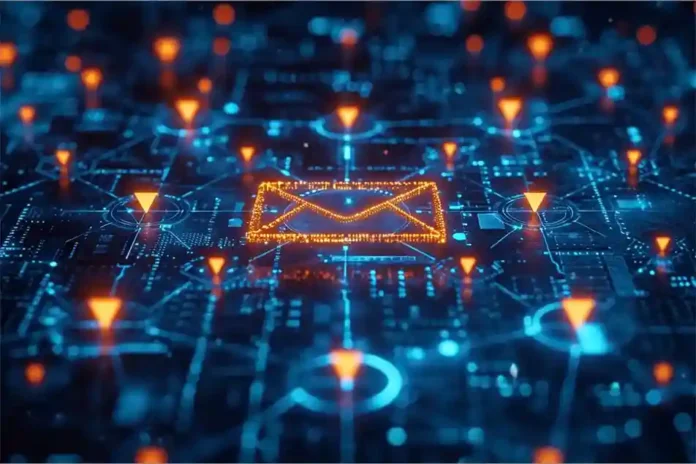If someone mediates your messages, your information could be compromised. Because of safety concerns, organizations and people are using email encryption to defend the substance of their messages from cybercriminals. How about we investigate how email encryption functions and when it may be helpful?
Overview of Email Encryption
Email encryption modifies plain text’s substance and images to questionable or incomprehensible cipherwork. That’s what encryption ensures, if someone unapproved intercession a mail, they will not get its substance. The mixed messages pointing to the beneficiary is the way to figure out the data.
You can use email providers that offer encoding help as a value, of course, or choose an email encoding specialist co-op, particularly for big business-level requirements.
How Email Encryption Works
Email encryption can be broken down into two simple steps: Message Scrambling and Coding.
- Sending the scrambled email: The email travels safely over the web, preventing it from being examined by anyone else.
- Unscrambling the message: The recipient’s program uses a coordinating key to translate the mixed content into the initial, clear message.
Importance of Email Encryption
Encryption is required when sending individual, monetary, delicate, or exclusive information via email, forestalling unapproved access to your correspondences. In a corporate setting, cryptography varies depending on your association’s consistency and compliance with security regulations and controls. Jumble messages shield against expected inside risks, like labor.
With phishing assaults expanding, cryptography is the primary line of protection. It checks the credibility of correspondence and diminishes the probability of tricks. It guarantees you get secure messages from real sources, shielding you from tricksters endeavoring to delight you.
Types of Email Encryption
1. S/MIME
This method is frequently employed in corporate settings to ensure emails are scrambled, confirmed, and maintained without modification. S/MIME employs encryption and achieves high marks.
A Certificate Specialist (CA) must issue an S/MIME license to both the sender and beneficiary. They also need mail clients that support S/MIME and alter their certificates in development.
2. PGP/GPG
This strategy is well known for individual and non-corporate use. PGP/GPG allows clients to shuffle emails and incorporate computerized marks. It also allows users to create their encryption setups and manage key administration to a great extent.
However, it can be complex to set up and utilize, requiring consistent computer programs for both source and beneficiary.
3. Built-in Email Encryption by Providers
A few email suppliers offer programmed encryption emails put away while being sent or both. For illustration, Gmail employs TLS to disorganize emails amid travel between Gmail nodes and other hosts that bolster TLS. Even though TLS gives security, it isn’t as solid as end-to-end encoding.
Key Components of Email Encryption
Email encryption depends on two fundamental components:
1. Open Key Cryptography
This method, known as topsy-turvy cryptography, employs two open and private keys. With the recipient’s public key, the sender rearranged the message.
The message can be decoded with the recipient’s private key, which is kept confidential. The secret key is special and cannot be determined from the open key, guaranteeing communication security.
2. Digital Signature
Digital signatures in email ensure that the sender’s identity remains intact and is verified. The sender utilizes their exclusive key to create a sophisticated signature for the content.
The recipient uses the sender’s open key to authenticate the autograph. If the x is substantial, it states that the message has been marked with the sender’s private key and contains no alteration.
Email Encryption Techniques
1. End-to-End Coding
This strategy is the foremost secure method of mail encryption. Messages sent through the sender’s device are encrypted and jumbled until the receiver unscrambles them. This methodology ensures that no mediator, not even the ISP, can examine the messages.
2. In-Transit Encryption
In-transit coding uses conventions like TLS to disorder emails from the sender to the recipient’s mail server. This method prevents the capture of emails during their travel.
However, once the emails arrive at the recipient’s host, they are recently unscrambled and transferred to their device. This implies that ISPs can get the substance of your emails if required.
Do You Need to Encrypt Your Emails?
If online security is paramount, you must tangle your emails and handle sensitive or classified data. Mail coding isn’t essential for regular, impersonal communications. Consider using progressed VPN encoding to add a layer of safety to your online connection.
A virtual network jumbles web tasks from your gadget, which is still the major help you’re using. It’s valuable to ensure your internet actions when using open Wi-Fi systems that are unsecured and vulnerable to interference.
For more protection, use email cryptology with a mysterious email account. These narratives transfer and obtain emails without exposing your identity or private information.
FAQs
What is email encryption?
Email encryption is a way to protect emails from unauthorized access. Only the receiver can read the email using this scrambling method.
How does an email encryption perform?
Email encryption turns a simple text mail into a scrambled code using a public-key infrastructure.
How can I secure company emails with encryption?
Organizations should assess their email risks and set up email encryption to protect all incoming and outgoing messages.



































